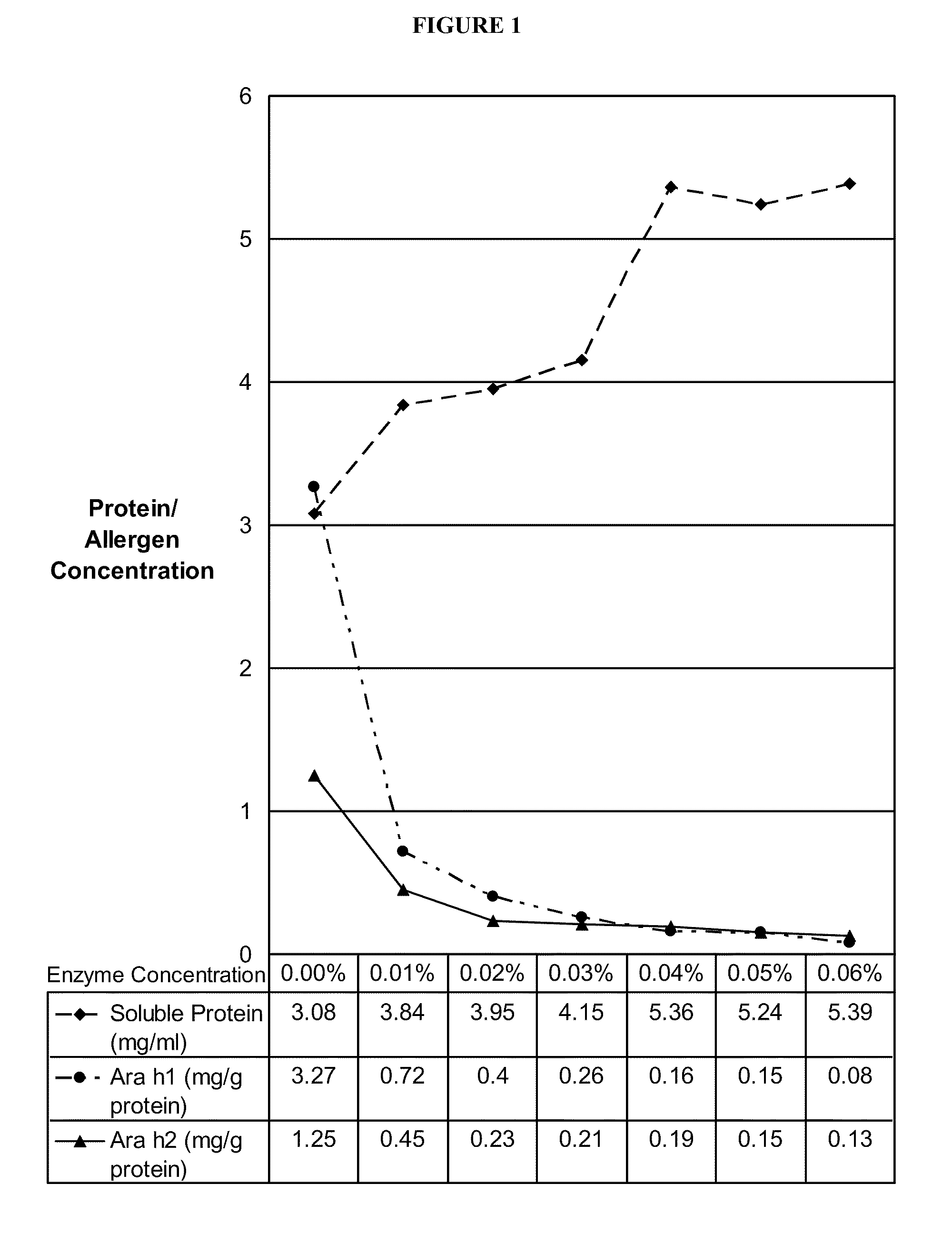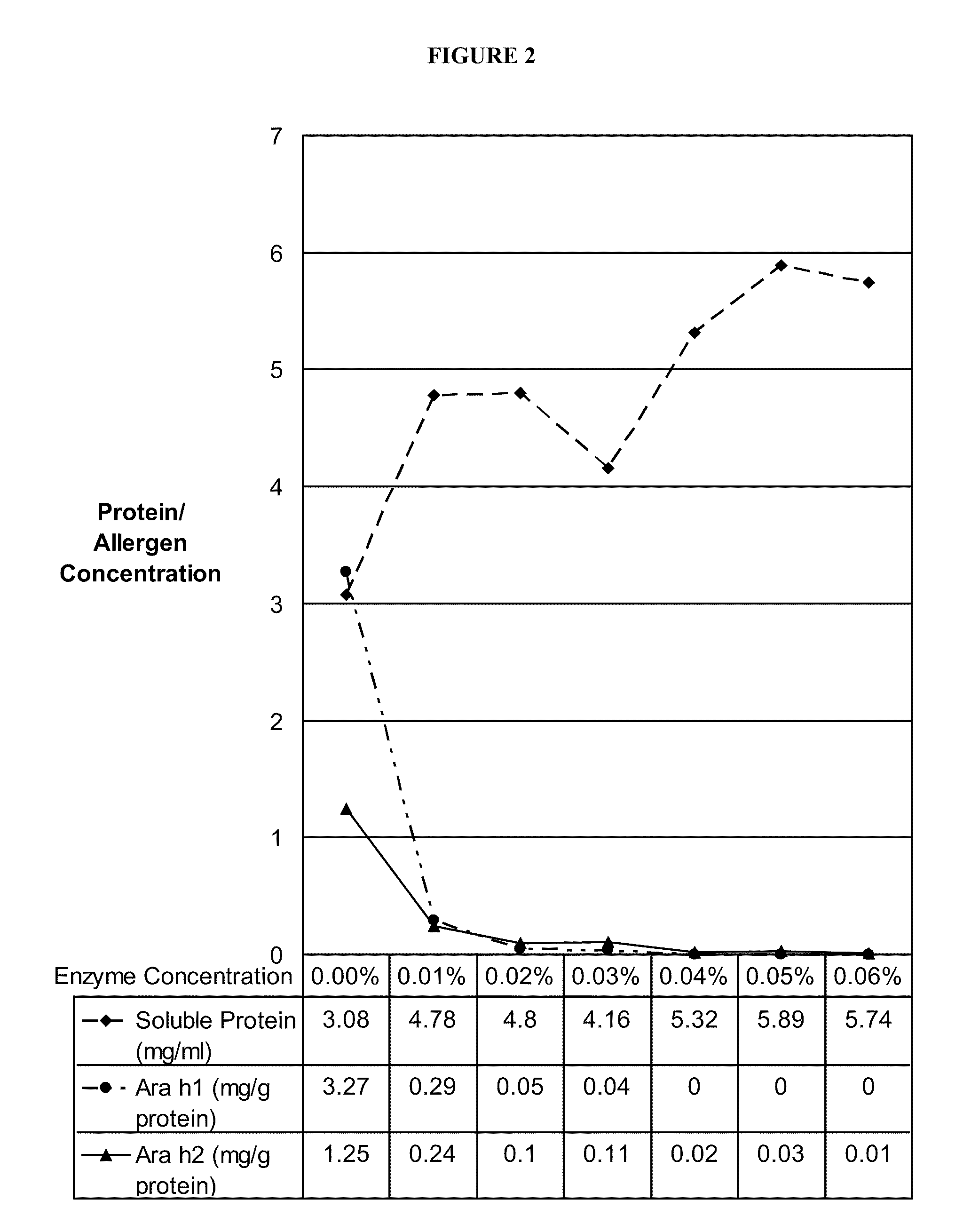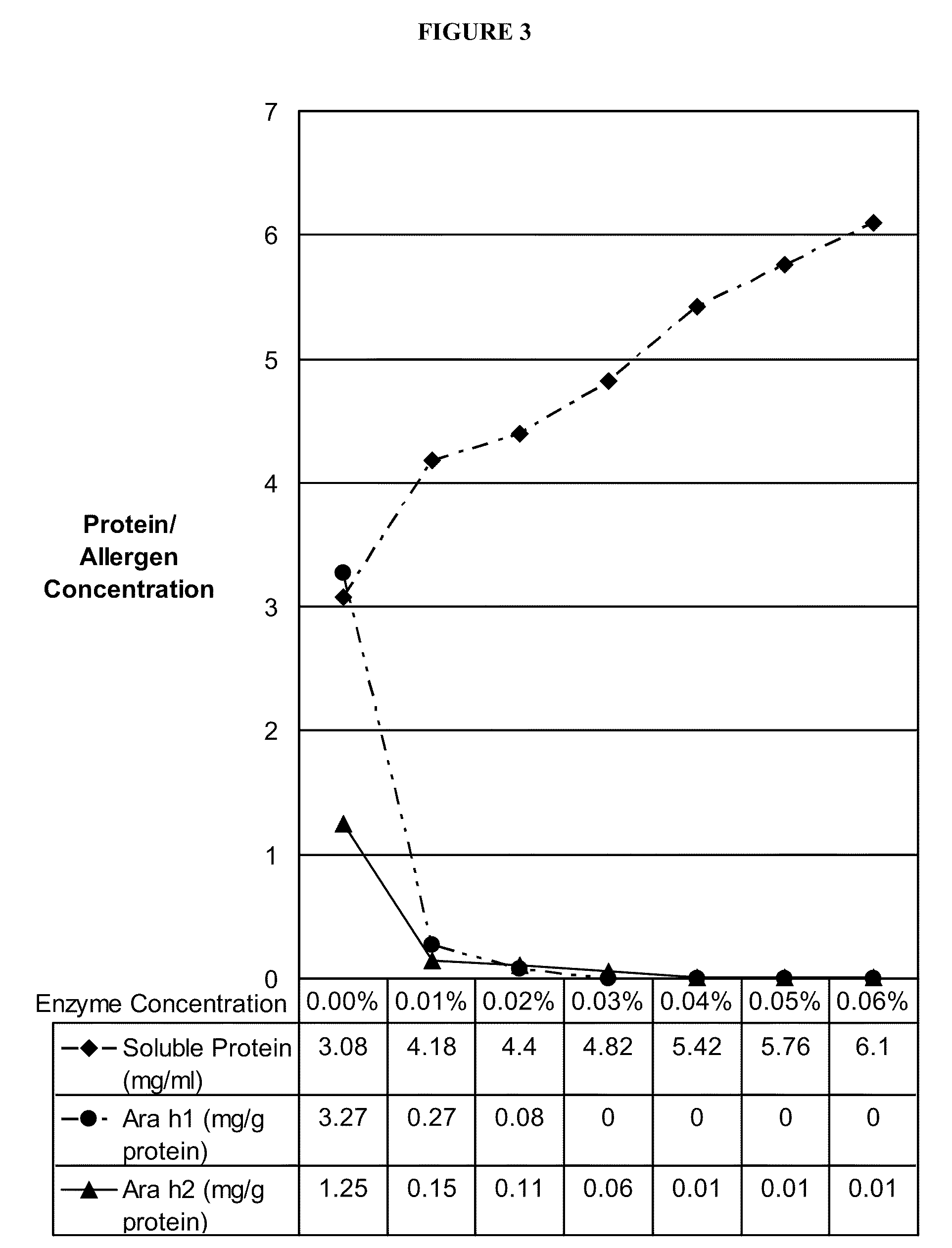Process for preparing hypoallergenic and/or non-allergenic peanut butter and associated products
- Summary
- Abstract
- Description
- Claims
- Application Information
AI Technical Summary
Benefits of technology
Problems solved by technology
Method used
Image
Examples
example 1
Effect of α-Chymotrypsin on Heat-Treated (Blanched) and Non-Heat-Treated Peanuts
[0043]In one example, the endopeptidase α-chymotrpysin was tested for its effectiveness in reducing the allergenic activity of peanut allergens in both heat-treated and non-heat-treated peanut kernels. Measurements of concentrations of the two major allergenic proteins, Ara h1 and Ara h2, were used to indicate the reduction in activity of all known peanut allergens (e.g., Ara h1 to Ara h8).
[0044]Procedure—Unroasted (raw) or roasted peanut kernels were heat-treated by being blanched in boiling water for about 5 minutes and then cooled to about room temperature. Other peanut kernels, both raw and roasted, were used without prior heat-treatment. Samples containing either blanched unroasted, blanched roasted, non-blanched unroasted, and non-blanched roasted peanut kernels were immersed in a solution containing α-chymotrypsin, wherein the enzyme concentration was 0.01%, 0.05%, 0.10% and 0.15% (w / w), respectiv...
example 2
Enzyme Treatments
[0060]Samples of both raw and roasted peanut kernels (purchased from Good Earth Peanut Co., Skippers, Va.) were weighed in 25 g portions and placed in separate 250 ml flasks. These kernel samples were then blanched in boiling water for about 5 minutes. They were then drained and cooled to room temperature. Afterwards, each 25 g kernel sample was transferred to its own individual flask. Fifty milliliters of a control solution, consisting of distilled water was prepared. Fifty milliliters of enzyme solution containing 0.001, 0.01, 0.1, 0.2, 0.3, 0.4, and 0.5% of α-chymotrypsin, trypsin or a 1:1 mixture of α-chymotrypsin and trypsin (purchased from Sigma-Aldrich, St. Louis, Mo.) were added to individual flasks containing 25 g blanched and drained peanut kernels. The flasks containing the peanut kernels and enzyme solutions were capped and incubated at about 37° C. for about 3 hours. After incubation, the kernel samples were dried at about 65-70° C. in a preheated vacuu...
example 3
Production of Hypoallergenic Peanut Butter
Effect of α-Chymotrypsin and Trypsin on Allergens of Home-Made and Commercially Available Peanut Butters
[0070]In one example, the endopeptidases α-chymotrypsin and trypsin were tested for their individual and conjunctive effectiveness in reducing the allergenic activity of peanut allergens in both home-made and commercially available peanut butters.
[0071]Procedure—A solution containing α-chymotrypsin, (Catalogue No.: C-4129, available from Sigma Aldrich), trypsin, (Catalogue No.: T369-500, available from Fisher Scientific), or a combination of both was introduced to home-made or commercially available peanut butter. One set of solutions was a 2.5 ml solution which contained 2, 4, 6, 8, 10, and 12 mg of enzyme per milliliter, respectively. A second solution was of a 1:1 ratio of α-chymotrypsin and trypsin. A third solution was a 1.25 ml solution which contained 20 mg of enzyme. A fourth solution was a 5 ml solution which contained 20 mg of en...
PUM
 Login to View More
Login to View More Abstract
Description
Claims
Application Information
 Login to View More
Login to View More - R&D
- Intellectual Property
- Life Sciences
- Materials
- Tech Scout
- Unparalleled Data Quality
- Higher Quality Content
- 60% Fewer Hallucinations
Browse by: Latest US Patents, China's latest patents, Technical Efficacy Thesaurus, Application Domain, Technology Topic, Popular Technical Reports.
© 2025 PatSnap. All rights reserved.Legal|Privacy policy|Modern Slavery Act Transparency Statement|Sitemap|About US| Contact US: help@patsnap.com



